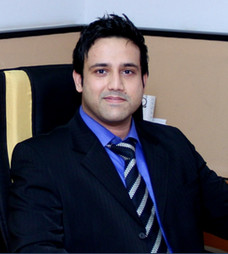 Mumbai, India: With financial inclusion already a top priority of banks in India, the developing trend of White Label ATMs (WLA) and their usage was expected to increase substantially in urban, semi-urban and rural areas. Latest statistics indicate only 58.7% households in India are availing banking services. Recently, the government declared setting up of a credit guarantee fund to support its over Rs.40,000 crore new Financial Inclusion Mission, which envisions to provide Rs.5,000 overdraft facility to around 8 crore new account holders, which can be withdrawn through ATMs. Prime Minister Shri. Narendra Modi is anticipated to launch this mission on Independence Day.
Mumbai, India: With financial inclusion already a top priority of banks in India, the developing trend of White Label ATMs (WLA) and their usage was expected to increase substantially in urban, semi-urban and rural areas. Latest statistics indicate only 58.7% households in India are availing banking services. Recently, the government declared setting up of a credit guarantee fund to support its over Rs.40,000 crore new Financial Inclusion Mission, which envisions to provide Rs.5,000 overdraft facility to around 8 crore new account holders, which can be withdrawn through ATMs. Prime Minister Shri. Narendra Modi is anticipated to launch this mission on Independence Day.
According to guidelines issued by RBI in February 2012, the interchange rate that card-issuing banks pay to another bank who’s ATM the customer utilizes was Rs.18 for withdrawal and Rs.8 for balance enquiry and other services. This calculation made business sense to non-banking entities and RBI witnessed a swell in applications for WLA licenses under the Payment and Settlement Systems Act 2007. However, in August 2012, the interchange rates were slashed to Rs.15 and Rs.5, respectively. According to a private bank official, the finance ministry sought for the interchange rate to go even lower to Rs.10 because it wanted to salvage government-owned banks that were paying enormous interchange amounts to private banks. However, since white-label ATMs was an endeavor of RBI, the central bank intervened and the rate was reserved at Rs.15.
“The WLA operators, to be sure that their business is not hampered in the future, have taken an assurance from RBI that the charges will not go below Rs.15 per transaction and it has not,” said A.P. Hota, MD & CEO, National Payments Corp. of India Ltd. (NPCI). Source: Live Mint & The Wall Street Journal
RBI said that in comparison to the credit card, the higher interchange fee for debit cards in India doesn’t make sense. “We are saying that the debit card interchange fee should be lower because credit cards get paid after some time, whereas in debit cards, there is an instantaneous debit into my account. Hence, logically debit cards charges should be lower,” said G. Padmanabhan, the RBI Executive Director in charge of the Payments and Settlement System. Source: ATM Marketplace
“What is conveniently neglected is the intention for encouraging an increase in RuPay interchange rate was the reduction of operational costs for banks, not generating revenue. The rationale behind issuing debit cards that existed then holds true today. When debit cards were developed and introduced in the 80s – 90s, interchange fee was not even a part of the equation. An ATM was envisioned to be an extension of the bank offering customers convenient banking services 24×7 that directly reduced operational costs of hiring manpower at branches,” said Mani Mamallan, Founder & CMD of Electronic Payment And Services (P) Ltd. and a Founding Member and Director of Confederation of ATM Industry (CATMi).
As we approach 200,000 ATMs in the country, ATM & ATM related payments issues are dominating the news, predominantly post the unfortunate death of a customer in a Bangalore ATM last year. Many in the banking industry as well as payment companies are proclaiming that interchange is the key driver to ATM proliferation in the country and its related businesses. India has borne fluctuating interchanges from various networks as high as Rs.36 with Visa / MasterCard in 1998 and as low as Rs.10 in BANCS network. The majority of ATMs deployed gradually shifted from Private Sector banks (approx. 20%) to Public Sector Banks (approx. 80%) and the present interchange is Rs.15 on the indigenous RuPay network conceived by NPCI. For the first time in 30 years global payment companies like Visa and MasterCard are facing the heat as the government has urged PSU banks to issue RuPay cards to all customers. In the past, the same RuPay network had an interchange rate of Rs.10 signifying that the cost of an ATM transaction is less than the cost of a transaction via a teller. There were private banks who also justified their ATM programme by presenting the difference between teller transaction and ATM transaction. When Indian banks initially developed debit cards for use at ATMs, the rationale was to lower costs by reducing the use of cash counters and live tellers. Automated solutions for cash withdrawals, like ATMs, were simply a less expensive means of conducting business with banks’ customers. Not long after individual banks and smaller banks introduced ATM services, the industry recognized that the best path toward ubiquitous ATM services was to form ATM networks.
India needs a price correction of the interchange rate and the impact of a lower surcharge can actually increase per-transaction unit economics for the WLA / IADs. The true opportunity is to shift the transactional cost from the consumer to marketers trying to reach the consumers on the move or near the point of sale. WLA operators have a unique opportunity to adopt a win-win concept of advertising leading brands on the ATM screen or in the ATM kiosk, primarily using targeted advertising as a source of revenue to offset cost to the consumer. With plenty of options available to consumers and with the price of an ATM transaction remaining relatively high, WLA / IADs will need to be much more creative in how they provide the most basic of banking services.
Indian consumers believe that they have worked hard for their money and with the abundance of ATM locations, the only fact they notice is the fee for accessing their money, not convenient access. Consumers look at their transactions on an individual level and each time they encounter fees, they mentally register the consistently high cost of transacting at the local ATM. With over 173,291 ATMs currently operating in the country providing virtually the same service of cash withdrawals, balance inquires and account transfers; there is little variation among these operators and their value proposition to the consumer. The only factors consumers have to differentiate one ATM from the next is transaction fee, location and quality of user experience.
“While customers grapple with the fact that an ATM is a service and that there are operational fees associated with the provision of ATM services, they underestimate the extent of the many operational fees involved. These include expenses associated with the rental agreements, maintenance requirements, telecommunications charges, security and more that are required to make an ATM network available. To ensure that our customers are never far from an ATM location, EPS spends a considerable amount of money maintaining and expanding our ATM network in over 5000 locations in Maharashtra,” said Richard Canday, AVP – Corporate Affairs, Electronic Payment And Services (P) Ltd
On a closing note, an ideal and realistic interchange fee will ensure that customers enjoy the convenience of never being far from an ATM machine and allow WLA / IADs to further expand their ATM services. It seems that banks and our government too, must realize that the Indian ATM industry without the means to support itself has no incentive to serve the public
For more information about this article please contact:
Richard Canday
Associate Vice President – Corporate Affairs
ELECTRONIC PAYMENT AND SERVICES (P) LTD.
Email: [email protected]
URL: www.electronicpay.in
Disclaimer: This material is for informational purposes and views expressed herein are my personal opinion. The company EPS and its owners / operators / employees assume no obligation, loss, liability or risk thereof







